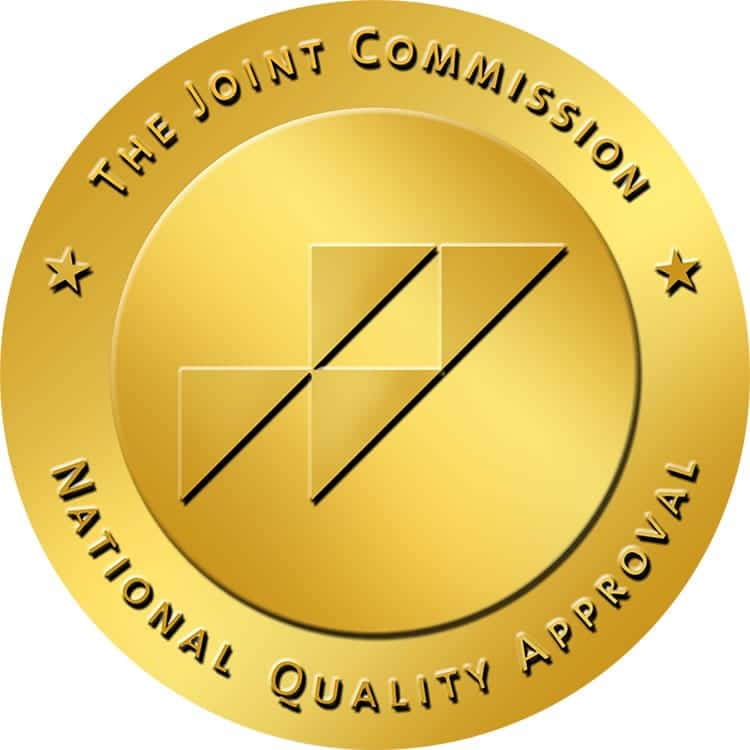
Prescription drug abuse has been on the rise over the last 15 years, now becoming viewed as a health epidemic in the U.S. The problem affects a wide range of people and communities, with about 54 million people over the age of twelve having misused prescription drugs at some point in their lifetime. Of that 54 million, 7 million developed an addiction to drugs, as reported in 2014. Since then, this number has been steadily climbing with opioids, depressants, and stimulants ranking as the most commonly abused types of prescribed substances. While many may consider street drugs more threatening than prescription drugs, these substances count towards 45% of drug-related deaths as opposed to the 39% due to street drugs. This makes over-the-counter drugs some of the most deadly illegally used substances. First, let’s define prescription drug abuse. Some drugs are legal when prescribed by a registered medical doctor to a patient for pain, disorders, diseases, etc. Prescription drug abuse occurs when the substance is misused, such as taking more than directed, taking someone else’s prescription, or using the medication for reasons other than the reason it was prescribed. Next, we will dive into which are the most commonly abused prescription drugs, the negative effects these substances have on the user, and some of the most common prescription drug abuse symptoms.
Opioids
Opioids, also known as narcotics, are a type of drug that is used to treat moderate to severe pain, such as chronic pain following a car accident. While opioids were originally derived from the opium poppy plant, chemists are now able to replicate the chemical structure of opioids to create synthetic drugs that mirror the properties of the opium plant. The replication of this drug has allowed pharmaceutical companies to mass produce these drugs and sell them to medical companies around the world. Some of the most frequently abused narcotics include:
- Codeine – an opioid prescribed to relieve mild to moderate pain that can cause drowsiness, relaxation, and apathy. This is often a primary ingredient in prescription cough suppressants.
- Morphine – A highly addictive narcotic used to treat severe pain that can produce a sense of euphoria, reduce anxiety, and cause drowsiness.
- Fentanyl – A synthetic opioid that is fifty to one hundred times stronger than morphine. Common signs of abuse of this drug can include seizures, blurred vision, nausea and vomiting, constipation, and slowed breathing.
- Oxycodone – A commonly prescribed synthetic narcotic used to treat pain. It is one of the most abused prescription drugs on the market.
The Opioid Epidemic
The opioid epidemic is a major health crisis sweeping the nation. This issue has come to attention because of the drastic increase in drug overdose-related deaths over the past decade. The number of accidental overdoses from opioids has more than quadrupled over the past 10 years, becoming one of the leading causes of unintentional deaths. During the 1990’s, pharmaceutical companies sold synthetic and semi-synthetic opioids to the medical community under the guise that these medications were less addictive than traditional narcotics. At the time, these drugs seemed like an answer to an already growing problem, however, the promises made by these distributors were too good to be true. Rather than help relieve the problem, synthetic opioids dramatically increased the cases of addiction to narcotics. The high price tag on prescription opioids has also sent addicted individuals to seek opioids in street drugs such as heroin. This act not only affects the addicted, but it also impacts the entire community by inviting drug sales and criminal activity into the locale. The crisis also affects us on a national scale, incurring an economic burden of an estimated $78.5 billion dollars each year.
How Opioids Affect the Body
This type of medication affects the opioid receptors in the brain, spinal cord, and gastrointestinal tract to help reduce the experience of pain. Since they also affect the brain, opioids can also dull emotions, causing the user to feel less burdened by stress and sadness. However, long-term use of this medication is extremely risky as opioids are considered among the most addictive substances. Prescription opioids are strikingly similar to heroin, the street drug that has terrorized communities for decades, and have similar effects on the body and brain. Opioids are often misused because there is a high associated with taking these drugs, typically described as “euphoria”, which triggers the reward sensors in the brain. Not only does the opioid high become addictive to users, but the body also becomes addicted, making it both dangerous and painful to detox from this drug abuse disorder. Dependence and addiction occur when the prolonged use of a substance or behavior corrupts the reward sensors in the brain. It begins with a psychological dependence on the drug. The individual will use the substance to experience pleasure, curb pain, release stress, or feel comfort. As time goes on, those reward sensors demand more and more of the substance to experience the same kind of effects. This tolerance causes a biological change in the brain’s chemistry, inciting an addiction to the drug.
[button url=”tel:877-798-4382″]Call Today (877) 798-4382 [/button]
Depressants
Central nervous system depressants are a class of drugs prescribed to treat a variety of psychological disorders, such as anxiety, paranoia, and psychosis. Tranquilizers, sedatives, and hypnotics exist under the umbrella of depressants and seek to relax the mind and body of the user. Commonly abused central nervous system depressants include:
- Barbiturates – This type of depressant is designed to relax the central nervous system and is used to treat headaches, insomnia, and seizures. Barbiturates include medications such as Luminal (phenobarbital), Mebaral (mephobarbital), and Nembutal (pentobarbital sodium).
- Benzodiazepines – Frequently referred to as “benzos,” this type of depressant is used to treat mental disorders such as anxiety, epileptic seizures, panic attacks, and PTSD. Common types of benzodiazepines include Xanax (alprazolam), Klonopin (clonazepam), and Valium (diazepam).
- Sleep Medications – Depressants prescribed to provide short-term relief for symptoms like insomnia. Popular sleep medication brands include Ambien (zolpidem), Lunesta (eszopiclone), and Sonata (zaleplon).
The History of Depressants
Barbiturates are the oldest of our list of three central nervous system depressants. In the late 1800’s, barbiturates were developed to cure sleep-related disorders. Throughout the early and mid-1900’s, it was the most popular drug on the market for treating a variety of mental illnesses, serving as both a sedative and hypnotic. The first benzodiazepine was made in 1960 by a chemist by the name of Leo Sternbach. It was then marketed as Librium, closely followed by the creation of Valium thereafter. These drugs were developed as a substitute for barbiturates, which were beginning to be viewed as dangerous due to their ability to reduce the user’s heart rate and slow breathing. While generally viewed as safer than barbiturates, benzodiazepines still come with grave warnings of dependence and addiction. In the 1990’s, modern sleep medications were created to mirror some of the benefits of benzodiazepines but were developed with a different chemical structure that promised fewer side effects. These types of medications are also known as non-benzodiazepines.
How Depressants Affect the Body
Central nervous system depressants interact with the brain’s GABA (gamma-aminobutyric acid) receptors by increasing activity in these neurons. This increase in activity causes a decrease in mental distress, inhibitions, and anxiety. The feeling associated with these drugs, especially when used other than prescribed, is often called a high or euphoria. Common side effects include a slowing of brain function, reduced pulse and breathing, confusion, dizziness, disorientation, depression, and addiction. Like opioids, depressants can cause a psychological and physiological addiction to the medication. After the initial use, the body begins to build a tolerance to the depressant, needing higher and higher doses to achieve the same results as previously experienced. The initial side effects, such as sleepiness and discordination, begin to subside as the drug begins to be needed for normal function. Signs of addiction include panic or anxiety when the user is unable to fill their depressant prescription. Withdrawal symptoms may include insomnia, body tremors, seizures, nausea, and vomiting. Prolonged abuse of depressants can result in breathing difficulties, high blood pressure, chronic fatigue, and overdoses. Overdoses on barbiturates can lead comas or death.
Stimulants
Stimulants are a type of drug that are used to treat conditions like attention-deficit hyperactivity disorder (ADHD) and narcolepsy. Originally, these drugs were manufactured for respiratory issues, neurological disorders, and other health conditions, but as the abuse of these substances rose, the scope of issues to be treated with this medication became more limited.
- Dextroamphetamine – A stimulant that is typically prescribed to individuals with ADHD or narcolepsy. This medication is intended to increase energy and improve alertness while decreasing the need for sleep. Common brands of this stimulant include Dexedrine and Adderall.
- Methylphenidate – A central nervous system stimulant that treats ADHD in both children and adults by improving focus and decreasing impulsivity. Popular drugs under this class include Ritalin and Concerta.
The History of Prescribed Stimulants
Methylphenidate was created by a Swiss chemist by the name of Leandro Panizzon in 1944. The medication was originally marketed for the treatment of depression, fatigue, senility, and narcolepsy. Dextroamphetamine is a component of methylphenidate, so the isolated version of the drug provides stronger effects in smaller doses. During the 1960’s, methylphenidate adopted the same use we know today: as a treatment for ADHD. The drug functions by increasing the amount of dopamine and norepinephrine in the brain which in turn helps calm hyperactivity, decrease impulsivity, and improve concentration. Dextroamphetamine wasn’t manufactured until the early 2000’s. Abuse of this drug began as early as it’s release and continues to be all too common today. In 2007, a study found that 27% of people prescribed methylphenidate misused the medication. Today, 67% of people who abuse these types of drugs are college students that hope to improve their attention span, study for longer, and perform better in class.
How Stimulants Affect the Body
As mentioned above, stimulants affect the brain by increasing levels of particular monoamine neurotransmitters, including norepinephrine and dopamine. The drug blocks certain transporters from removing these neurotransmitters and increases their effects. While, when used properly, these stimulants can be beneficial, abuse of this medication can cause serious health problems. Stimulants can increase heart rate, blood pressure, and blood glucose as well as constrict blood vessels. Abusers also run the risk of becoming addicted to prescription drugs. Stimulants provide energy, decrease appetite, enhance memory, and cause other effects that users find desirable. When a prolonged abuse of stimulants occurs, the individual user is no longer able to create and sustain normal levels of dopamine in the brain. In order to achieve functioning levels of this neurotransmitter, the individual begins to rely on the drug, even experiencing withdrawal symptoms when they are not able to get their next dose. Abuse of stimulants can result in dangerous consequences for users. The individual can develop feelings of hostility and paranoia, resulting in an alienation from others. Too large of doses can also dangerously increase body temperature and cause an irregular heartbeat. Abuse of stimulants can even cause cardiovascular failure or seizures.
Prescription Drugs and Abuse
While medicine is designed to help people live healthier and happier lives, many medications come with a risk of abuse when used other than directed. The most commonly abused prescription drugs, like opioids, depressants, and stimulants, are also some of the most widely prescribed medications. Before you consider starting a new medication, work with your doctor to find the solution that’s best for you. If you or someone you know is currently struggling with an addiction to prescription drugs, know that there is a way to overcome your prescription drug addiction. Contact us today to learn more information about our prescription drug addiction treatment. References https://www.drugfreeworld.org/drugfacts/prescription/abuse-international-statistics.html https://talbottcampus.com/prescription-drug-abuse-statistics/ https://www.thedoctors.com/the-doctors-advocate/second-quarter-2017/prescribing-opioids-safely/ https://www.drugabuse.gov/publications/media-guide/most-commonly-used-addictive-drugs https://www.drugabuse.gov/publications/misuse-prescription-drugs/what-classes-prescription-drugs-are-commonly-misused https://www.addictioncenter.com/opiates/oxycodone/ https://www.drugabuse.gov/publications/misuse-prescription-drugs/what-classes-prescription-drugs-are-commonly-misused https://misuse.ncbi.nlm.nih.gov/error/abuse.shtml https://www.drugfreeworld.org/drugfacts/prescription/depressants.html https://drugabuse.com/adderall/history-and-statistics-of-study-drugs/
















